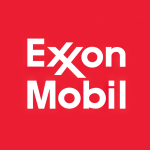Welcome to our dedicated page for Exxon Mobil news (Ticker: XOM), a resource for investors and traders seeking the latest updates and insights on Exxon Mobil stock.
Exxon Mobil Corporation (XOM) provides comprehensive energy solutions through global exploration, refining, and chemical manufacturing operations. This news hub offers investors and industry professionals direct access to the company's official communications and market-moving developments.
Track ExxonMobil's latest press releases including quarterly earnings disclosures, operational updates, and strategic initiatives. Our curated collection features verified announcements on production milestones, partnership agreements, and sustainability efforts without editorial commentary.
Key updates cover exploration activities, refinery capacity changes, petrochemical innovations, and energy transition projects. Bookmark this page for real-time access to XOM's regulatory filings, leadership statements, and industry position updates essential for market analysis.
ExxonMobil (NYSE: XOM) has announced that Senior Vice President Neil Chapman will participate in a fireside chat at the Bernstein 41st Annual Strategic Decisions Conference in New York. The event is scheduled for May 29, 2025, at 8 a.m. ET. Investors and interested parties can access the live webcast through the event page, and an archived audio recording will be made available on ExxonMobil's website approximately 24 hours after the event.
Imperial Oil Limited (TSE: IMO, NYSE American: IMO) held its annual meeting of shareholders on May 8, 2025, where all seven nominated directors were successfully elected. The meeting saw strong shareholder participation with 474,218,780 shares represented (93.16% of outstanding common shares) either in person or by proxy.
The elected directors include D.W. Cornhill, S.R. Driscoll, J.N. Floren, G.J. Goldberg, N.A. Hansen, M.C. Hubbs, and J.R. Whelan. John Whelan received the highest approval with 467,228,982 votes in favor, while Neil Hansen received the most votes against with 39,213,866 shareholders opposing his election.
ExxonMobil (NYSE: XOM) and Marubeni Corporation have signed a long-term agreement for supplying 250,000 tonnes of low-carbon ammonia annually from ExxonMobil's Baytown, Texas facility. The facility, expected to be the world's largest of its kind, will produce up to 1 billion cubic feet of low-carbon hydrogen daily and over 1 million tons of low-carbon ammonia yearly, with approximately 98% CO2 removal.
Marubeni will acquire an equity stake in the facility and supply the ammonia primarily to Kobe Power Plant. The final investment decision is expected in 2025, subject to government policy and regulatory permits. The deal aims to support Japan's decarbonization goals, particularly in power generation and hard-to-abate sectors like steel manufacturing, chemicals, and transportation.
Imperial Oil (TSE: IMO, NYSE American: IMO) has declared a quarterly dividend of 72 cents per share for the second quarter of 2025, maintaining the same level as the first quarter. The dividend will be payable on July 1, 2025, to shareholders of record as of June 4, 2025.
As Canada's largest petroleum refiner, Imperial has an impressive track record of paying dividends for over 100 years and has increased its annual dividend payment for 30 consecutive years. The company maintains its position as a leading crude oil producer, petrochemical manufacturer, and coast-to-coast fuels marketer in Canada.
ExxonMobil (NYSE: XOM) has announced a significant agreement with Calpine to transport and permanently store up to 2 million metric tons per year of CO2 from Calpine's Baytown Energy Center near Houston. This marks ExxonMobil's sixth CCS customer, bringing their total CO2 under contract to ~16 MTA.
The project, part of Calpine's Baytown Carbon Capture and Storage (CCS) Project, will enable the production of approximately 500 megawatts of low-carbon electricity, sufficient to power over 500,000 homes, while providing steam to nearby industrial facilities. The captured CO2 will be integrated into ExxonMobil's existing CO2 pipeline system along the U.S. Gulf Coast.
The project is currently in development with engineering, permitting, and other activities underway. Final advancement remains subject to supportive government policy, customer power sales agreements, and regulatory permits.
ExxonMobil (NYSE: XOM) has announced it will release its first quarter 2025 financial results on Friday, May 2, 2025. The press release will be available at 5:30 a.m. CT through Business Wire and on the company's investor website.
A live conference call will be held at 8:30 a.m. CT, featuring Chairman and CEO Darren Woods, CFO Kathy Mikells, and VP of Investor Relations Jim Chapman. Investors can access the presentation via webcast or by calling the provided toll-free and local numbers.
Imperial Oil (TSE: IMO, NYSE American: IMO) has announced it will host its 2025 First Quarter Earnings Call on Friday, May 2, following the morning's earnings release. The event will begin at 9 a.m. MT and will be accessible via webcast.
Chairman and CEO Brad Corson, along with President John Whelan and VP of Investor Relations Peter Shaw, will lead the call. Corson will provide opening remarks before taking questions from covering analysts. The webcast recording will remain available for one year on Imperial's website.
Alternative access to the earnings information will be available through Imperial's website and Canada's SEDAR+ system if technical difficulties arise with the EDGAR filing system.


